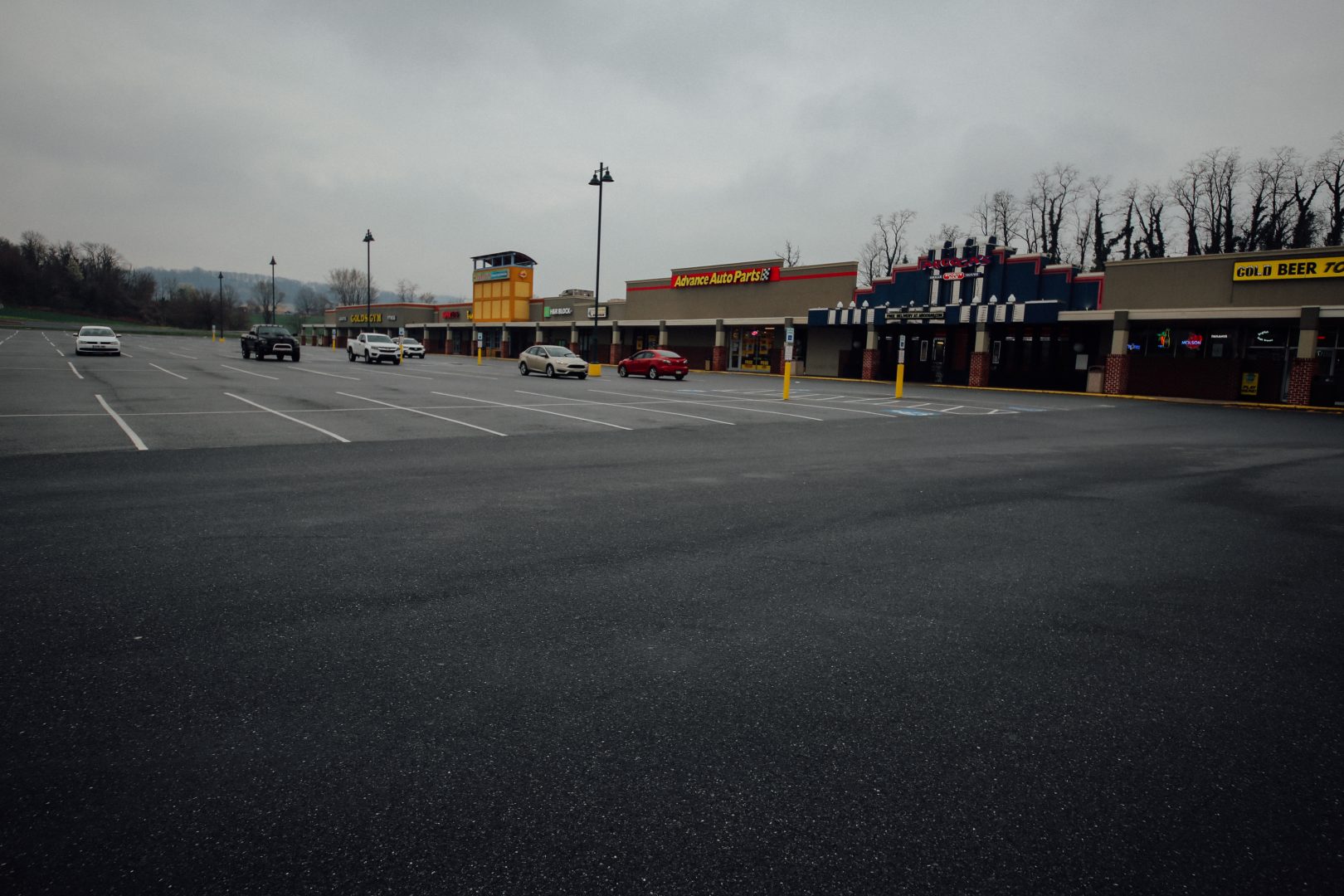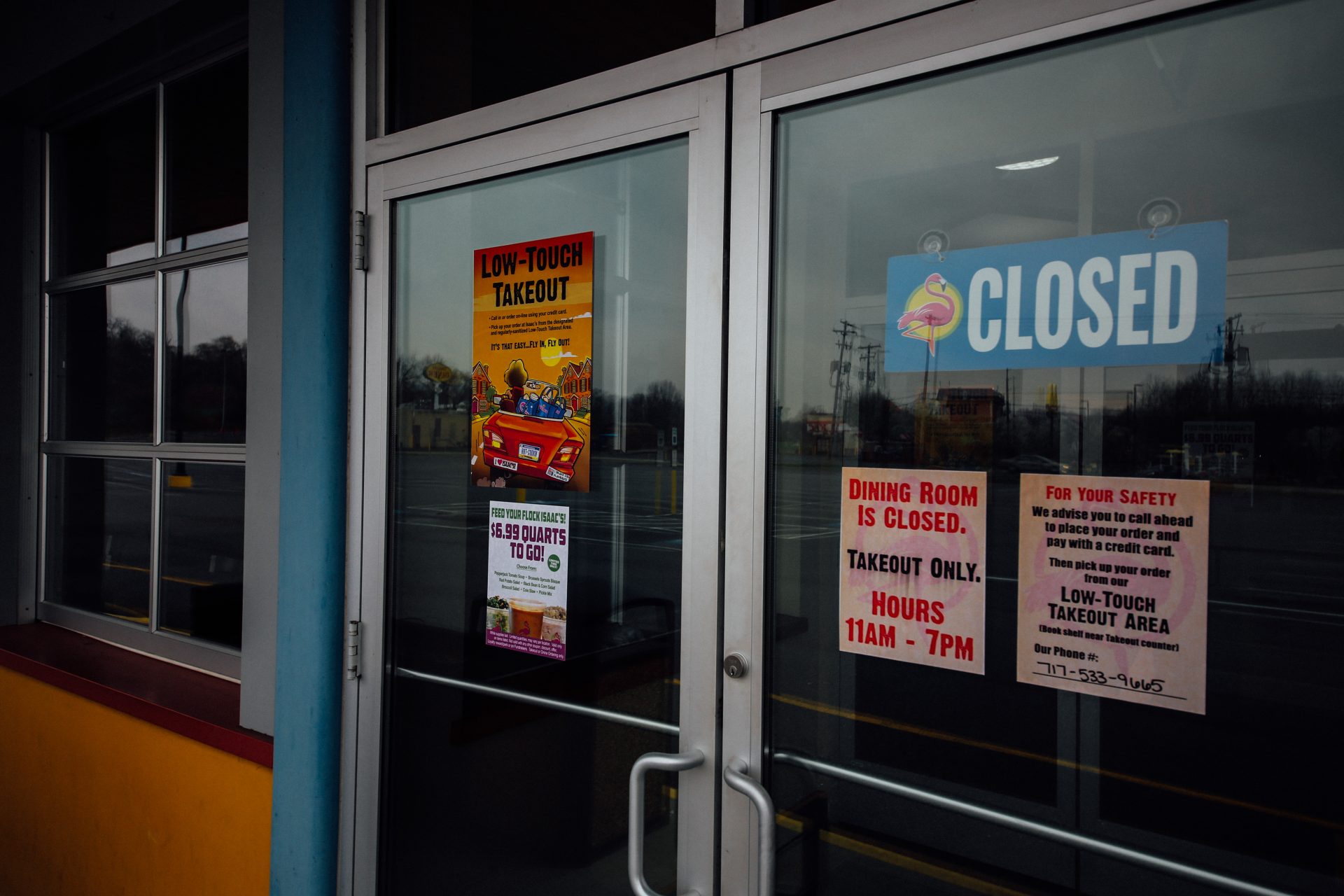
The parking lot at Park Village Plaza in Hummelstown is largely empty on April 1, 2020.
Tim Lambert / WITF

The parking lot at Park Village Plaza in Hummelstown is largely empty on April 1, 2020.
Tim Lambert / WITF

Tim Lambert / WITF
The parking lot at Park Village Plaza in Hummelstown is largely empty on April 1, 2020.
What you should know
» Coronavirus facts & FAQ
» Day-by-day look at coronavirus disease cases in Pa.
» It’s time to get serious about social distancing. Here’s how.
(Washington) — Job losses for the first time in nearly a decade. A slightly higher unemployment rate. Bad news, yes. But the Labor Department report coming out Friday will be just a hint of the economic misery that’s hitting Americans as the U.S. shuts down to fight the coronavirus.
The monthly report for March is based on surveys conducted three weeks ago, before the widespread closing of restaurants, retail shops and other businesses began.
That unprecedented shutdown has already pushed some 10 million people out of work. But most of those job losses won’t show up until the April employment report is published a month from now.
Even so, Friday’s report will likely be a milestone. It’s expected to show a net loss of 50,000 to 100,000 jobs in March, snapping a record-long streak of employment gains that has lasted almost a decade.

Tim Lambert / WITF
Closed signs are on the front door of Isaac’s Restaurant in Hummelstown. April 1, 2020.
The unemployment rate is expected to climb from 3.5% in February — matching a 50-year low – to about 3.7%.
“That will only be the tip of the iceberg,” said Lydia Boussour, senior U.S. economist at Oxford Economics. “We think April will be really the month where you will see the full magnitude of that labor market collapse.”
Boussour likens the abrupt halt in economic activity to what the Gulf Coast experienced during Hurricane Katrina. But in this case, the shutdown stretches across the country.
She projects that the U.S. will lose as many as 20 million jobs before the pandemic is under control and that unemployment will soar higher than at any time since World War II.
“We wouldn’t have thought a few weeks ago that something like this would be possible,” Boussour said. “You’re basically asking people to stay home and not go to work.”
More than 6.6 million Americans applied for unemployment benefits last week alone, 10 times the number who did so during the worst week of the Great Recession.
Losses are concentrated in restaurants, retail, recreation and manufacturing — all jobs that cannot easily be done at home or while practicing social distancing. Retail and manufacturing were struggling even before the coronavirus pandemic, but restaurants and hotels had been adding jobs at a rapid pace.

Get insights into WITF’s newsroom and an invitation to join in the pursuit of trustworthy journalism.
The days of journalism’s one-way street of simply producing stories for the public have long been over. Now, it’s time to find better ways to interact with you and ensure we meet your high standards of what a credible media organization should be.